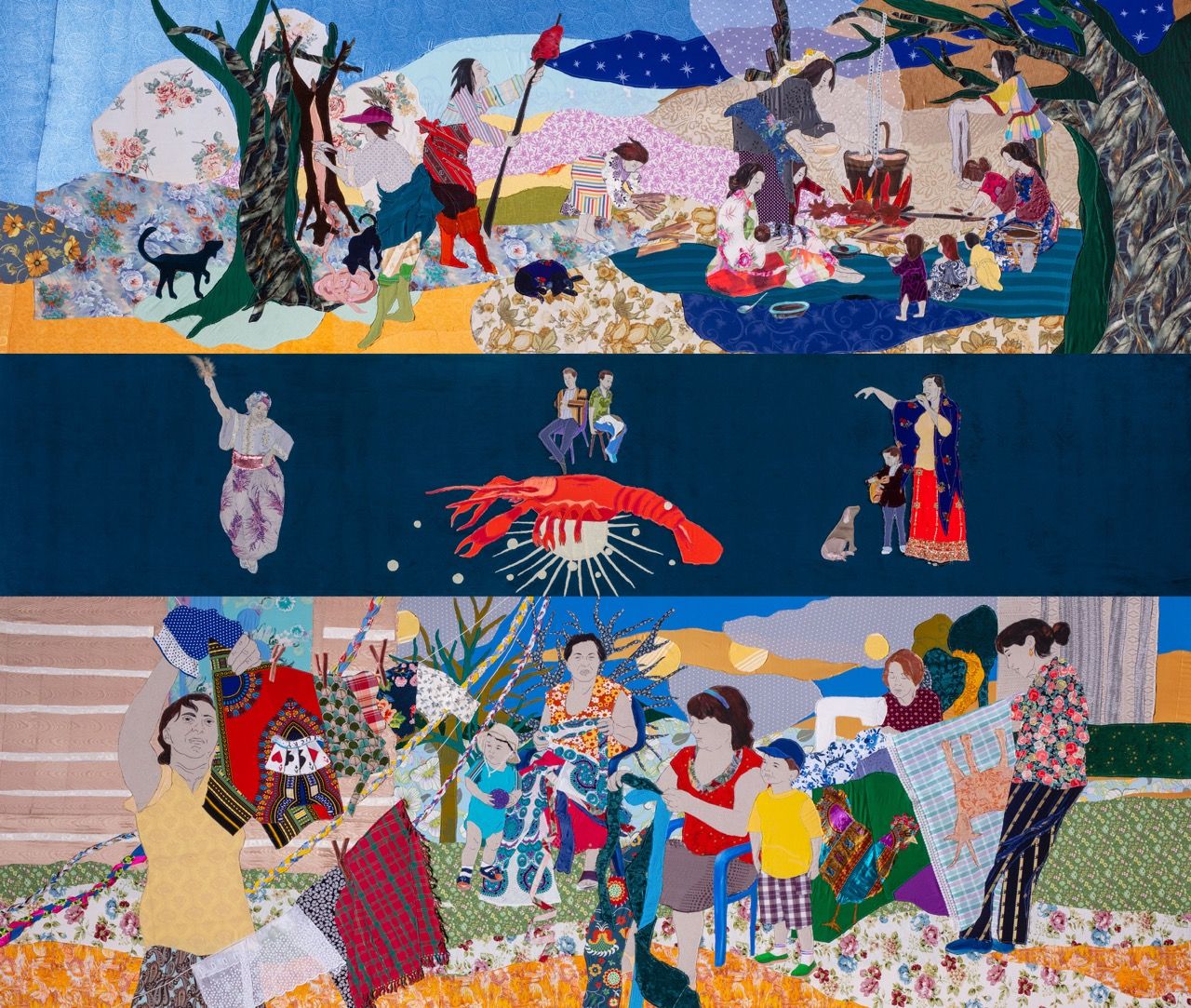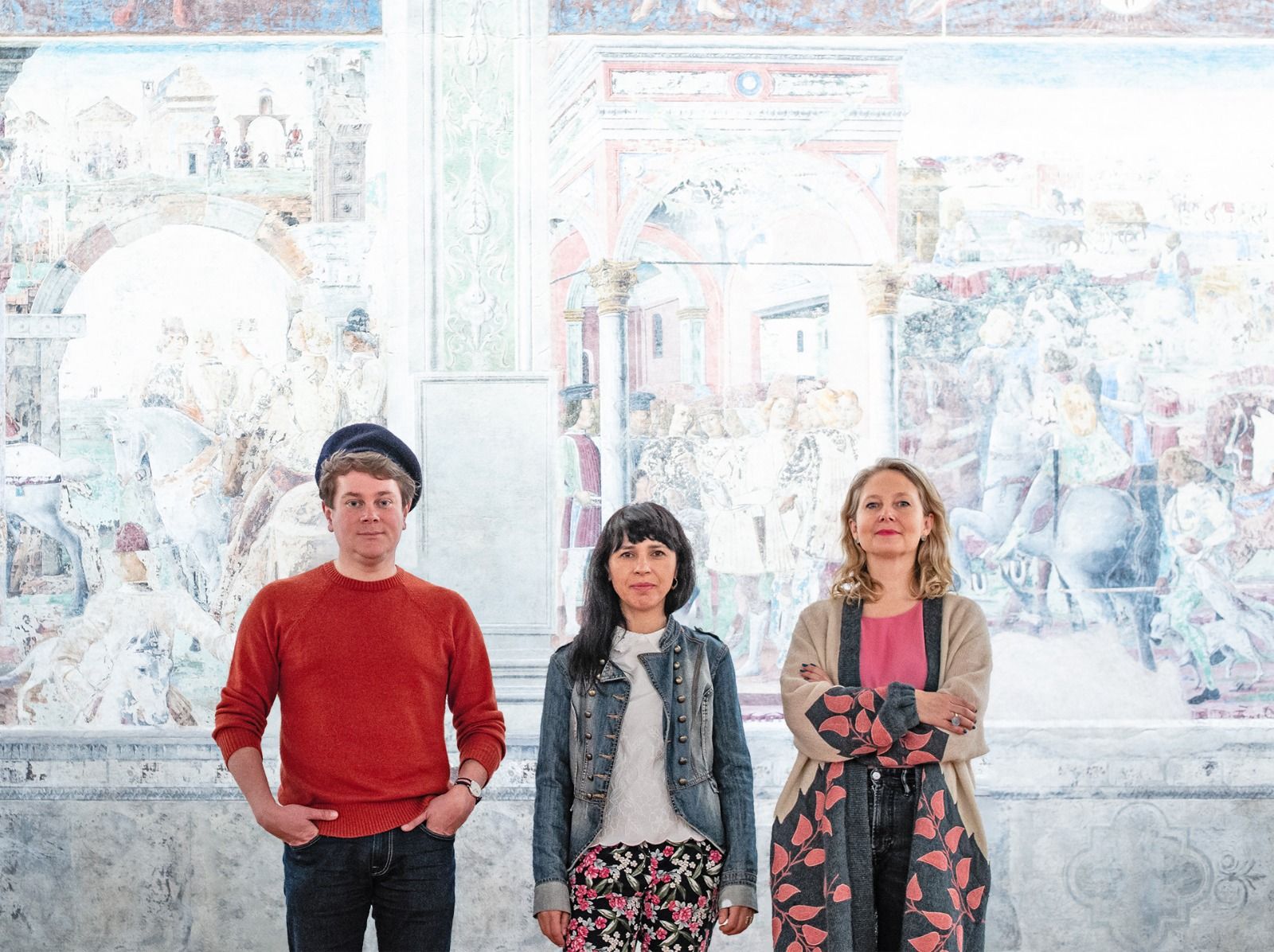Małgorzata Mirga-Tas
From Schifanoia: re-enchanting the world
Castello Estense, Hall of Coats of Arms
18 December 2022 - 10 April 2023
Curated by
Wojciech Szymański and Joanna Warsza
Potrebbe interessarti anche
Well, just in case you need it, here is one more reason to visit Ferrara: visit the exhibition From Schifanoia: re-enchanting the world by Malgorzata Mirga-Tas (1978), on view until April 2023 at the Este Castle.
Specifically, the monumental installation of tapestries covers the central area of the Hall of Coats of Arms and the exhibition. Organised by the Ferrara Arte Foundation, the Art Museum Service of the Municipality of Ferrara and Zachęta - National Gallery of Art in Warsaw, it includes eight of the twelve tapestries (i.e. large pictorial compositions on canvas) created by the artist. Mirga-Tas chose to exhibit the March, April, May, June, July, August, September and October, that is, the first seven still on display at Palazzo Schifanoia.
This artist from Poland with Romany origins was born and grew up in a small village on the border with Slovakia, Czarna Góra. In her works, she deals with stereotypes about the Romany community, trying to convey a positive narrative. Mirga-Tas first visited Ferrara in November 2021 to prepare and research for her participation in the recently concluded 59th Venice Art Biennale. The main attraction of her research was the Palazzo Schifanoia. Although it has never been exhibited in the city, the presence of the artwork in Ferrara almost represents a symbolic return: in fact, the exhibition takes place where it all began, in the history and monuments that fascinated the artist. She visited the places captured by the Ferrarese writer Giorgio Bassani, admired the works of great masters such as Francesco del Cossa and Ercole de' Roberti (an exhibition dedicated to them will be held in February) and discovered the figure of Duke Borso d'Este, patron of the two artists and commissioner of the Sala dei Mesi.
The textile composition consists of three vertical bands, just like in the Ferrara frescoes. However, visitors to the exhibition will not see the same events depicted in the Salone dei Mesi: on the works of Mirga-Tas there are not the stories of the Olympian gods, those of the decans and the scenes of courtly life in 15th-century Ferrara, but a new narrative, stitched onto fabrics in dazzling colours.
The upper band shows the mythical journey of the Romanies to Europe, inspired by a series of 17th century prints by the Lorraine engraver Jacques Callot. These illustrations constitute evidence of an almost colonial vision, in which the nomad was already regarded as 'the other'. The gesture of appropriation of the portraits of his ancestors should be understood as the artist's attempt to recover his history and regain control over a specific visual narrative. The central strip is an affective archive of Romany stories interpreted from a feminine perspective that combines images of real women with magical and astrological elements. A way of re-enchanting the world through portraits of women who have played a fundamental role in the artist's life, such as her grandmother or mother, but also Esma Redzepova, a Roma singer and composer, or the scholar Ethel C. Brooks. The one below represents everyday life in the artist's hometown and in other Romany settlements in the Tatra Mountains, such as Podhale and Spiš in Poland. The relationships, partnerships and work activities of the women are mainly represented.

These are stories that find artistic expression in the work of Mirgo-Tas as tapestries made from recycled material: curtains, sheets, skirts, the clothes of her family and friends. The work, realised over a period of six months and involving the precious help of four collaborators (represented in March), is a tale in images of the mutual contamination between the Romany, Polish and European cultures. Micro and macro stories that become a single bridge between different eras and cultures.
And if you are a lover of tapestries, we recommend the Cathedral Museum, an unmissable stop to admire the cycle of eight tapestries depicting the Stories of Saints George and Maurelius, made by Flemish artist Johannes Karcher between 1550 and 1553. A small curiosity: St George is the current patron saint of the city, as well as the name of the Cathedral. While Saint Maurelius was the first bishop of Ferrara.

Małgorzata Mirga-Tas
From Schifanoia: re-enchanting the world
Castello Estense, Hall of Coats of Arms
18 December 2022 - 10 April 2023
Curated by
Wojciech Szymański and Joanna Warsza

